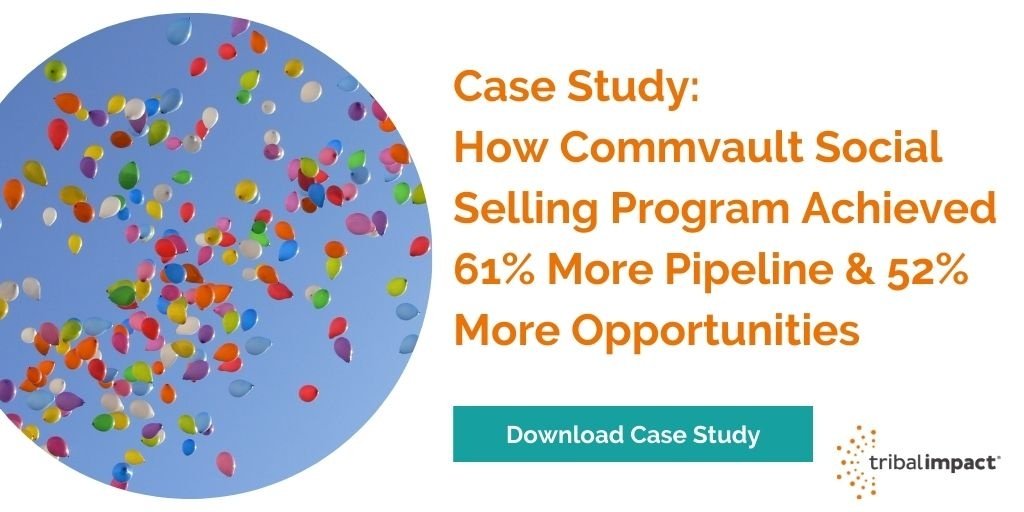
When it comes to scaling social selling, it can sound like a massive undertaking. It doesn’t have to be, though.
Scaling social selling for any industrial manufacturing business starts with change management. It’s all about getting everyone to understand the benefits of embracing social media to achieve business goals.
With almost half of social traffic to B2B websites coming from LinkedIn, if you’re not using it, you could be losing a lot of leads. Especially as social media is 100% more effective at closing leads than outbound marketing.
So, with all that in mind, let’s look at how industrial manufacturers can scale social selling.
Why Social Selling Works For Industrial Manufacturers
78% of salespeople who embrace social selling outsell their peers who aren’t. 92% of buyers, meanwhile, are willing to engage with a professional who’s a thought leader in their industry.
So, businesses that don’t take advantage of social selling are not only missing out, they’re going to get left behind.
People don’t care about datasheets and whitepapers anymore, especially if they come from a faceless brand instead of a real person.
Not everything B2B buyers do can be tracked by software, either. Reading posts on LinkedIn, sharing articles with colleagues on Teams, discussing someone/something in a meeting, attending an event, engaging with people on social media – many of these things play a vital role in conversions. But they’re very hard to quantify. Does that mean they’re not important? No! They play a huge role in getting that conversion. No software will ever be able to quantify that, though.
Social selling means you can reach your buyers at scale without spending a ton of resources and money on attending conferences and events. It still feels personable to your audience without employees needing to take the time to talk to every prospect one to one.
Not to mention that by embracing social selling over attending events, you can help the company reach its sustainability objectives, too.
How To Get Buy-In From Salespeople And Leadership
Salespeople and leadership teams are often hard to convince. Revenue-related data which explains the company’s current sales funnel can help with this. Look into:
- MQL sources – Where do most of your MQLs come from?
- MQL to pipeline – Of those MQLs, how many go into the pipeline?
- Source of deals – Where are most conversations and deals coming from? SEO, WOM, etc
- Sales cycle lengths from each deal by source – Check the average time it takes for all the deals from the same sources to move through the pipeline. This should be grouped by sources
- Average deal size per source –For example, how much do people who come from SEO spend on average?
- Customer Acquisition Cost – Verify how much it costs the company to acquire a customer, if possible, by source. To do this, use the following formula: Cost of Sales and Marketing divided by Number of New Customers Acquired.
- LTV by source – Out of all the customers you've identified, check the average LTV and what the best LTV sources are
- Churn rate by source – Which source(s) have a higher churn rate?
Once you have those figures, you should be able to see how expensive it is to move customers and best-fit customers down the pipeline. You can then compare that data with our case study so that you can benchmark it.
Your biggest spend is likely to be events and exhibitions. Travel, hotel rooms, event tickets, marketing goods, and possibly a stand with banners as well – it all adds up to big expenses and a big environmental cost, too.
With social selling, you eliminate this.
You don’t have to stop attending events, but you can strategically reduce them to improve your Customer Acquisition Cost.
With exhibitions, you can reach the masses. But you don’t have enough time to speak one to one with every single person of interest. It just isn’t scalable.
Social selling is the best of both worlds. It allows you to reach the masses on a personal level – at scale.
The best way to get buy-in as well is by proposing a 6-month pilot programme so that you can compare the results the social sellers get compared to non-social sellers.
How To Scale Social Selling In Industrial Manufacturing
Once you’ve got the buy-in, it’s time to scale. You do this by slowly gathering an army of social sellers who can then train other members in social selling, too.
This sounds simple. But it can be time consuming if you haven’t done it before. Why? Because it requires change management practices.
You also need to know who’s a good trainer and who isn’t, as not everyone is suitable for the role.
Once you’ve found your social selling champions, you need to train them to become trainers themselves.
We recommend an application process where you can single out the people who are passionate about the topic – and about training.
And that’s how you grow it.
As it grows, it gets more complicated as more information is passed on. Some teams will do things differently to others, which can be good and bad.
If you want to skip all the headaches and failures, we'd recommend looking at our -Coach the- Coach programme:
https://www.tribalimpact.com/coach-the-coach-for-social-media-champions
Here's a podcast episode with SAP about scaling social selling: https://podcast.tribalimpact.com/1874131/9725369-how-to-scale-digital-selling-at-an-enterprise-firm-with-kirsten-boileau-from-sap
Why Change Management Is Important For Success
Remember when you wanted to pick up a new behaviour? Like healthy eating or exercise? How long did it take you to completely change your behaviour? Did you slip into bad habits because you tried to change too much at once?
When anything new is introduced, people need time to adapt and change their ingrained habits.
Success is contagious, but you first need to get people to see that they, too, can achieve that success. Some people will get there faster than others, and you need to respect that.
Encouraging employees to take baby steps as they adjust to the changes will lead to a more successful role out than pressuring people because things aren’t changing fast enough.
How To Measure The Success Of Your Programme
It’s important to be able to measure success, as this will help you to get more people on board and encourage the higher-ups to keep investing in the programme.
But how do you do that?
Look into:
- Programme adoption rate
- Benchmark SSI scores back to sales performances
- Compare the metrics mentioned in the first section to non-social selling deals
Conclusion
Scaling social selling in a manufacturing business takes time, especially as you need to encourage everyone to adapt to the new way of approaching social media.
But, if you put the time and effort in, you’ll see a massive difference in metrics like your Customer Acquisition Cost.
Embracing social selling can help manufacturing businesses to become more profitable, allowing them to scale faster because there’s less of a need to spend time and money on less scalable strategies, like in-person events.

